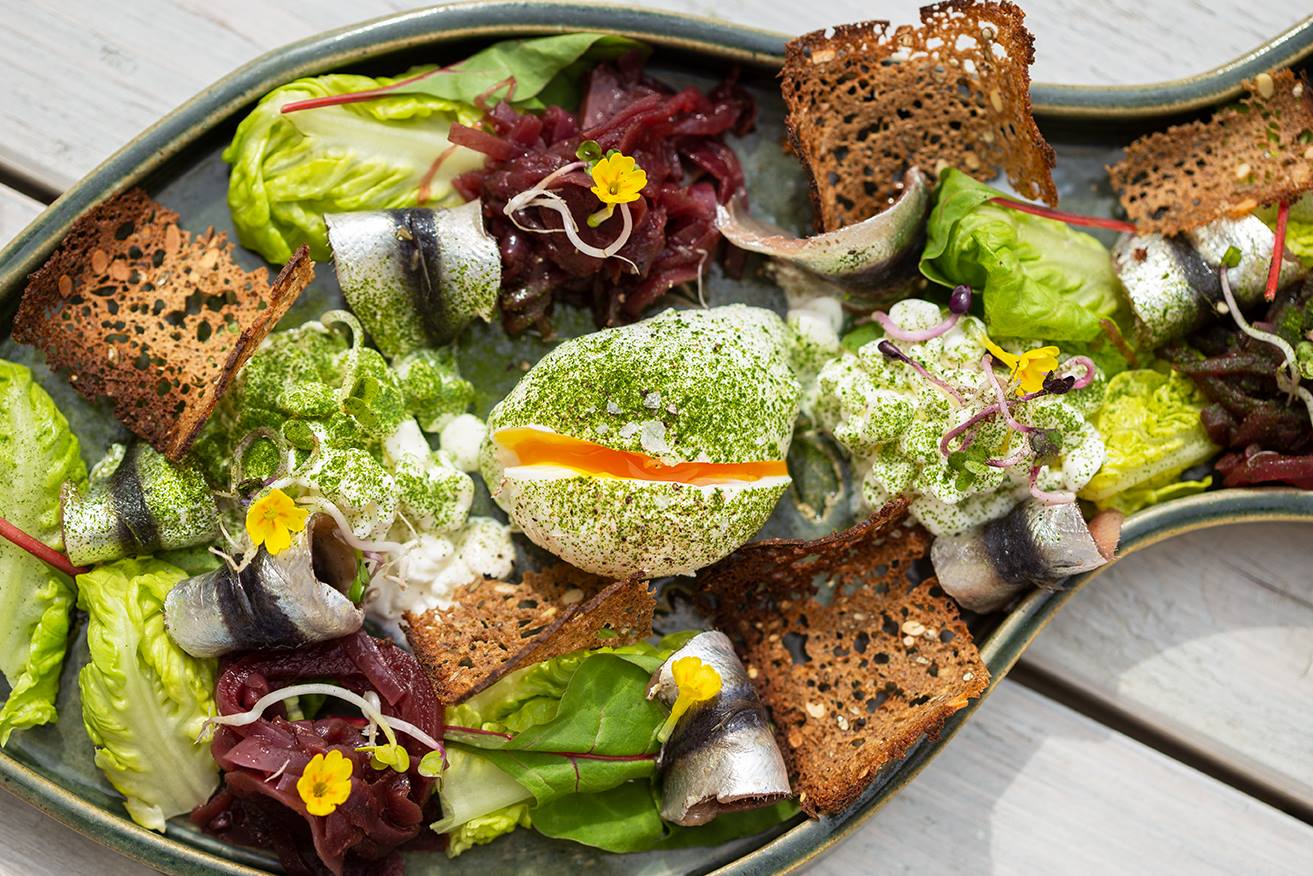Just like in all of the island's cultural expressions, in the gastronomy of Saaremaa tradition and modernity go hand in hand. The island's kitchens offer the visitor a wide range of possibilities, where the natural produce, which is often a unique result of the peculiar conditions of this land, is always of the finest quality.
Traditional Saaremaa cuisine has substantially been based on meat and potatoes, and on fish, but now bears influence from many other cuisines, including a variety of international foods and dishes, with a number of contributions from the traditions of nearby countries. Scandinavian, German, Russian, Latvian, Lithuanian and other influences have played their part. The most typical foods in Estonia have been rye bread, pork, potatoes and dairy products. Estonian eating habits have historically been closely linked to the seasons. In terms of staples, Estonia belongs firmly to the beer, vodka, rye bread and pork "belt" of Europe.
Cold table
The first course in traditional Estonian cuisine is based on cold dishes—a selection of pickles, meats and sausages served with potato salad (kartulisalat) or rosolje, an Estonian signature dish almost identical to Swedish sillsallad, based on beetroot, potatoes and herring. Small pastries called pirukad (pirukas in the singular)—a relative of the pirozhki—filled with meat, cabbage, carrots, rice and other fillings or mixtures are also popular, and are often served with bouillion. Herring is common among other fish as a part of the Estonian cold table. Smoked or marinated eel, crayfish dishes, and imported crabs and shrimps are considered delicacies. One of Estonia's national dishes is räim (Baltic dwarf herring), along with sprats. Flounder, perch and pike-perch are also popular.
In the 20th century, a special sandwich called kiluvõileib has become popular. This sandwich consists of a traditional rye bread open sandwich with thin layer of butter and a layer of vürtsikilu (pickled Baltic sprats) as topping. Boiled egg slices, mayonnaise and culinary herbs are optional extra toppings.
Soups
Soups may be eaten before the main course, but traditionally form the main meal and most often are made of meat or chicken stock mixed with a variety of vegetables. Soups are also blended with sour cream, milk and yogurt. Pea soup is also quite popular. A unique form of Estonian soup is leivasupp ("bread soup"), which is a type of sweet soup that is made of black bread and apples, normally served with sour cream or whipped cream, often seasoned with cinnamon and sugar.
Desserts
Specific desserts include kissell, curd snack and kama. Other common Estonian desserts are mannavaht (a cream made of semolina and juice or fruit), kohupiimakreem (creamy curd) or compote (kompott). Rhubarb pies are also a favorite. Another popular dessert is kringle (kringel), a sweet yeast bread often flavored with cardamom.
Summer and spring
Traditionally in summer and spring, Estonians like to eat everything fresh—berries, herbs, vegetables and everything else that comes straight from the garden. Hunting and fishing were common in history. Nowadays, they have remained as popular pastimes. It is popular to barbecue in the summer.
Winter and Christmas
During the winter months, jam, preserves and pickles are brought to the table. During the past, when the economy was largely agricultural, the gathering and conserving of fruits, mushrooms and vegetables for winter was essential. Today, gathering and conserving is less common because almost everything can be bought from stores, but preparing food for winter is still very popular in the countryside and continues to retain its charm for many, as opposed to the commercialization of eating habits.
Blood sausage (verivorst), roast goose (jõuluhani), sepik bread, head cheese (sült), and sauerkraut (hapukapsas) with oven-roasted potatoes have been part of the traditional Estonian menu that nowadays are mostly Christmas specialties. Also, typical Christmas treats have been apples, mandarin oranges, gingerbread and lingonberry jam.






